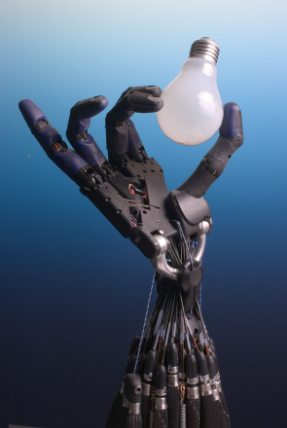Introduction:
In the ever-evolving landscape of technology, robotics stands out as a field with immense potential to revolutionize various aspects of our lives. From manufacturing to healthcare, from exploration to entertainment, robotics has permeated diverse sectors, offering innovative solutions to complex problems. This article delves into the fascinating realm of robotics, exploring its current state, advancements, applications, and the profound impact it continues to have on society.
Understanding Robotics:
Robotics is the interdisciplinary field of engineering and science that encompasses the design, construction, operation, and application of robots. These robots, often equipped with artificial intelligence (AI) and sensing capabilities, are programmed to perform tasks autonomously or semi-autonomously, mimicking human actions or executing predefined functions with precision and efficiency.
Advancements in Robotics Technology: Recent years have witnessed remarkable advancements in robotics technology, propelled by breakthroughs in AI, machine learning, sensor technology, and materials science. These advancements have led to the development of highly sophisticated robots capable of performing tasks that were once deemed exclusive to human capabilities. From humanoid robots like Boston Dynamics’ Atlas to industrial robots employed in manufacturing processes, the diversity and capabilities of modern robots continue to expand rapidly.
Applications of Robotics:
The applications of robotics are vast and diverse, spanning multiple industries and domains. In manufacturing, robots have revolutionized production lines, enhancing efficiency, accuracy, and safety while reducing costs. Collaborative robots, or cobots, are increasingly being integrated into workspaces, working alongside humans to streamline processes and improve productivity.
In healthcare, robots are making significant contributions in areas such as surgery, rehabilitation, and elder care. Surgical robots, like the da Vinci Surgical System, enable minimally invasive procedures with enhanced precision, leading to quicker recovery times and better patient outcomes. Similarly, robotic exoskeletons are assisting individuals with mobility impairments, enabling them to regain independence and improve their quality of life.
Beyond traditional industries, robotics is also making its mark in fields such as agriculture, logistics, space exploration, and entertainment. Agricultural robots are revolutionizing farming practices, optimizing crop yields, and reducing the reliance on manual labor. Autonomous drones and delivery robots are transforming logistics operations, enabling faster and more efficient delivery services. Space agencies are deploying robotic rovers and probes to explore distant planets and celestial bodies, expanding our understanding of the universe.
The Impact of Robotics on Society:
The integration of robotics into various facets of society is reshaping the way we work, live, and interact with technology. While robotics offers numerous benefits, including increased efficiency, improved safety, and enhanced productivity, it also raises important questions and challenges. Concerns about job displacement due to automation, ethical considerations surrounding AI and robotics, and the need for regulations to ensure responsible deployment are among the key issues that require careful consideration.
Furthermore, the democratization of robotics technology, driven by open-source platforms, affordable hardware, and accessible education, is empowering individuals and organizations to explore and innovate in this field. DIY robotics kits, online resources, and community-driven initiatives are fostering a new generation of robot enthusiasts, innovators, and entrepreneurs.
Looking Ahead:
As robotics continues to evolve and permeate deeper into our society, its transformative potential is boundless. From autonomous vehicles reshaping transportation to robotic companions providing assistance and companionship, the possibilities are endless. However, realizing the full benefits of robotics requires a collaborative effort involving policymakers, industry stakeholders, researchers, and the broader community to address challenges, mitigate risks, and ensure that robotics technology serves the collective good.
Conclusion:
In conclusion, robotics represents a frontier of innovation with far-reaching implications for society. By harnessing the power of robotics technology responsibly and ethically, we have the opportunity to enhance our lives, advance scientific discovery, and address pressing challenges facing humanity. As we navigate the exciting yet complex landscape of robotics, it is imperative that we approach its development and deployment with foresight, empathy, and a commitment to shaping a future where humans and robots coexist harmoniously, unlocking new possibilities and pushing the boundaries of what is achievable.

